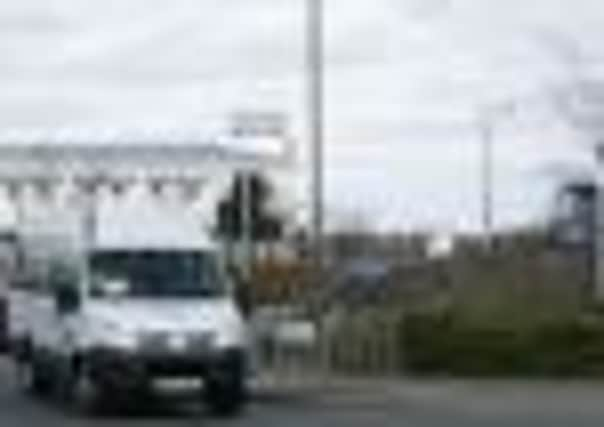NHS to investigate as Lothians readmissions soar


The latest figures show more than four per cent of patients having surgery are back in hospital within 28 days of leaving, while more than more than one in 11 medical patients return to a hospital bed within a month.
While some readmissions are unrelated to the earlier visit, some experts believe that high readmission rates indicate that patients are being discharged too early, in order to free up beds.
Advertisement
Hide AdAdvertisement
Hide AdDr David Farquharson, NHS Lothian’s medical director, admitted that there were “quite significant differences” between the Lothian and national rate, but refuted the claim that it was due to patients being sent home before they were ready.
He said: “It is important that we understand why this may be and to do so we are looking at a random selection of patients who have been readmitted to understand the reasons for this.
“We believe this is more complicated than a simple issue of length of stay, as there is no evidence to suggest patients are being readmitted due to being discharged from hospital too soon.”
It is expected that the probe using patient notes will take about two months.
Advertisement
Hide AdAdvertisement
Hide AdThe latest available figures show that of every 1000 admissions, 21.76 surgical patients and 50.42 medical patients are readmitted to hospital within seven days in Lothian, compared with Scottish rates of 20.23 and 45.18.
Across the region, 42.77 surgical patients and 111.57 medical patients in every thousand return to hospital within a month, compared with 38.83 and 101.56 nationwide.
Despite the higher readmission figures, health bosses have embarked on a drive to discharge patients more quickly and a recent audit showed that more the one in five patients in the Royal Infirmary did not need to be there, but had to stay as places in smaller hospitals or care homes were not available.
Huge pressure over beds at the ERI was also revealed, with a 101 per cent occupancy rate when a day of care audit was carried out in January.
Advertisement
Hide AdAdvertisement
Hide AdDr Jean Turner, a former GP and director of the Scotland Patients Association, said she suspected a lack of beds, poor continuity in care and inadequate staffing levels may lie behind the high number of readmissions in Lothian.
She said: “Good staff hate this, but there’s nothing they can do because they’re always looking for beds.
“It takes time to make good decisions, but if staff haven’t got time or are always having to pass people around they can’t do their best for patients and things get missed. It’s very frustrating for doctors and nurses.”
Dr Turner added: “Speed is not always the most effective or economic way of treating someone.”
‘Bed blocking is council’s fault, not health service’s’
Advertisement
Hide AdAdvertisement
Hide AdWHILE some experts believe high readmission rates indicate that discharges are made too soon, hundreds of patients are forced to remain in hospital for far longer than they should have to.
Bed blocking – meaning patients are well enough to leave hospital but have nowhere to go – has become an increasing problem in recent years.
Diana Saunders, 80, a former caterer, was forced to stay in Liberton Hospital three weeks longer than was necessary before she was discharged on Friday, according to her husband of 60 years, William.
The 83-year-old said that the prolonged stay had a devastating impact on the family, before a care plan was finally put in place by Midlothian Council, ten weeks after his wife was first admitted to the Royal Infirmary with breathing and kidney complaints before being transferred.
Advertisement
Hide AdAdvertisement
Hide AdMr Saunders, who previously worked for Midlothian Council, said: “The hospital said she could have been out three weeks ago, but that the council were holding back carers we need at home.
“It was distressing for everyone. We would go in to see her and she’d be sleeping all the time when we were there. She didn’t say anything, but when we were trying to leave she would be holding on to your hand as if to say ‘can I come too?’
“You get hold of a social worker but then they just pass it on to another crowd. It seemed like everything collapsed and no-one bothered about it. We had to speak to a director to get things moving.”
The latest NHS Lothian figures show that on a census day in February, 398 patients were on NHS Lothian’s delayed discharge database, up from 365 in January, with the problem at its worst in Edinburgh.
Advertisement
Hide AdAdvertisement
Hide AdMr Saunders added: “People blame the NHS for bed blocking but it’s not the health service’s fault, it’s the council’s.”
A Midlothian Council spokeswoman said: “Midlothian has one of the lowest hospital discharge rates in the Lothians, however in this case not enough notice was given of the discharge. We will continue to work with NHS Lothian to improve this.
“We kept in touch with the family throughout and Mrs Saunders is now home and is receiving the care she requires.”